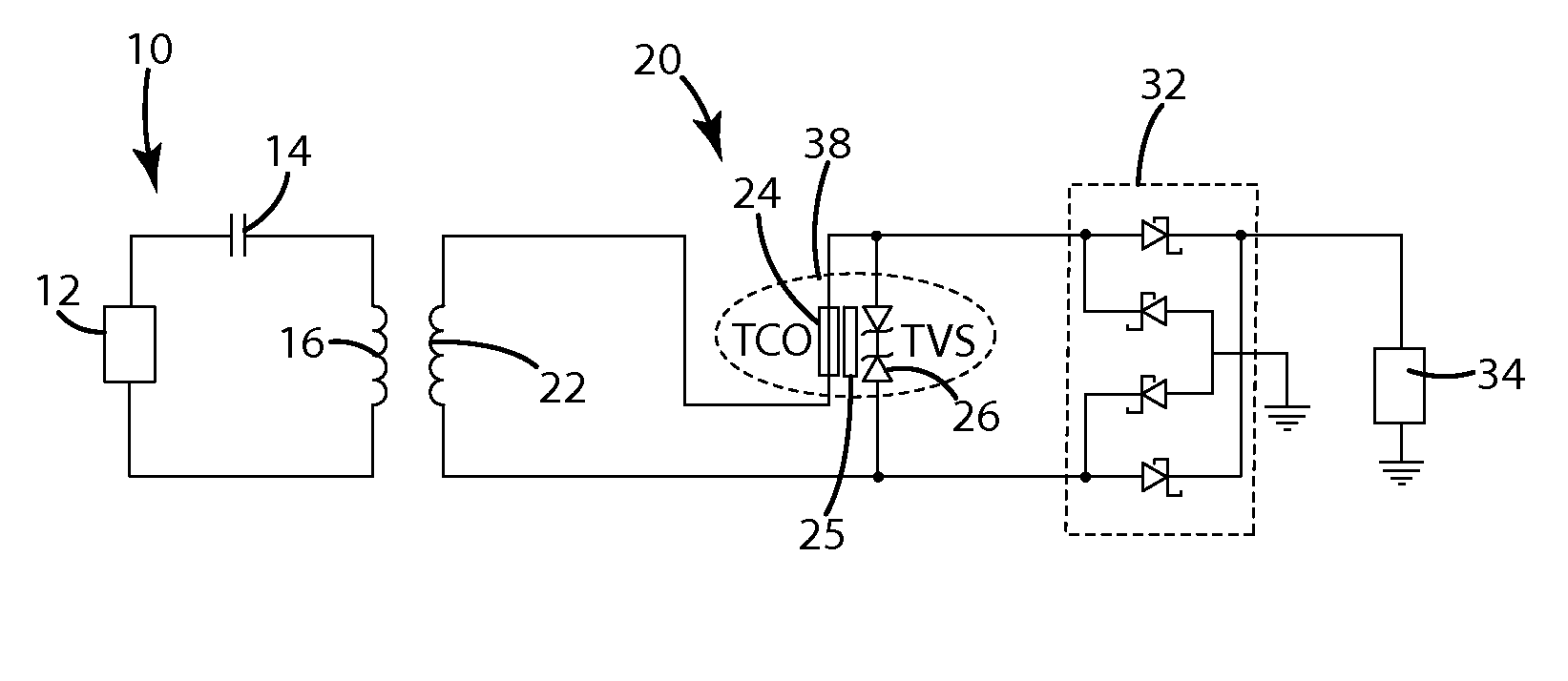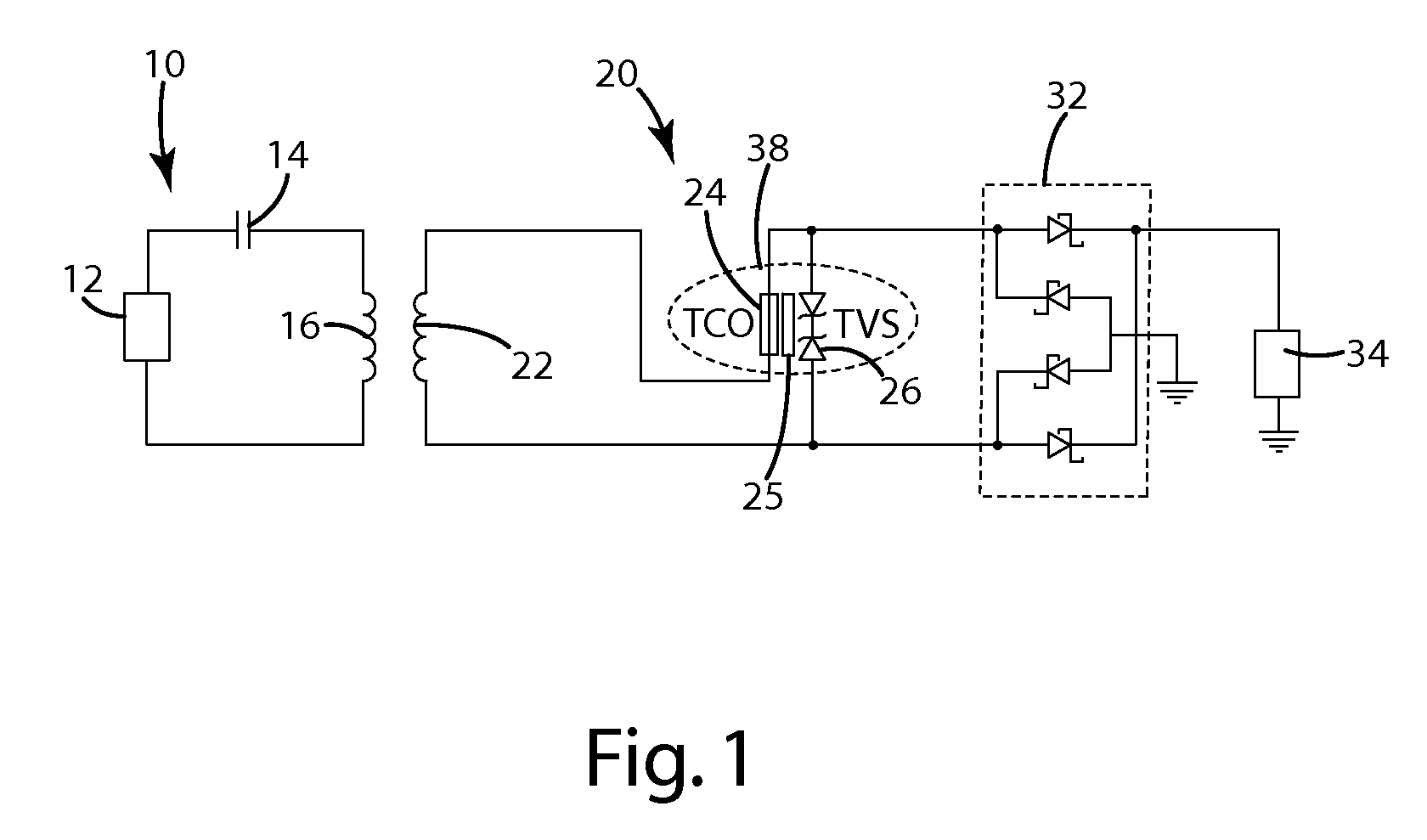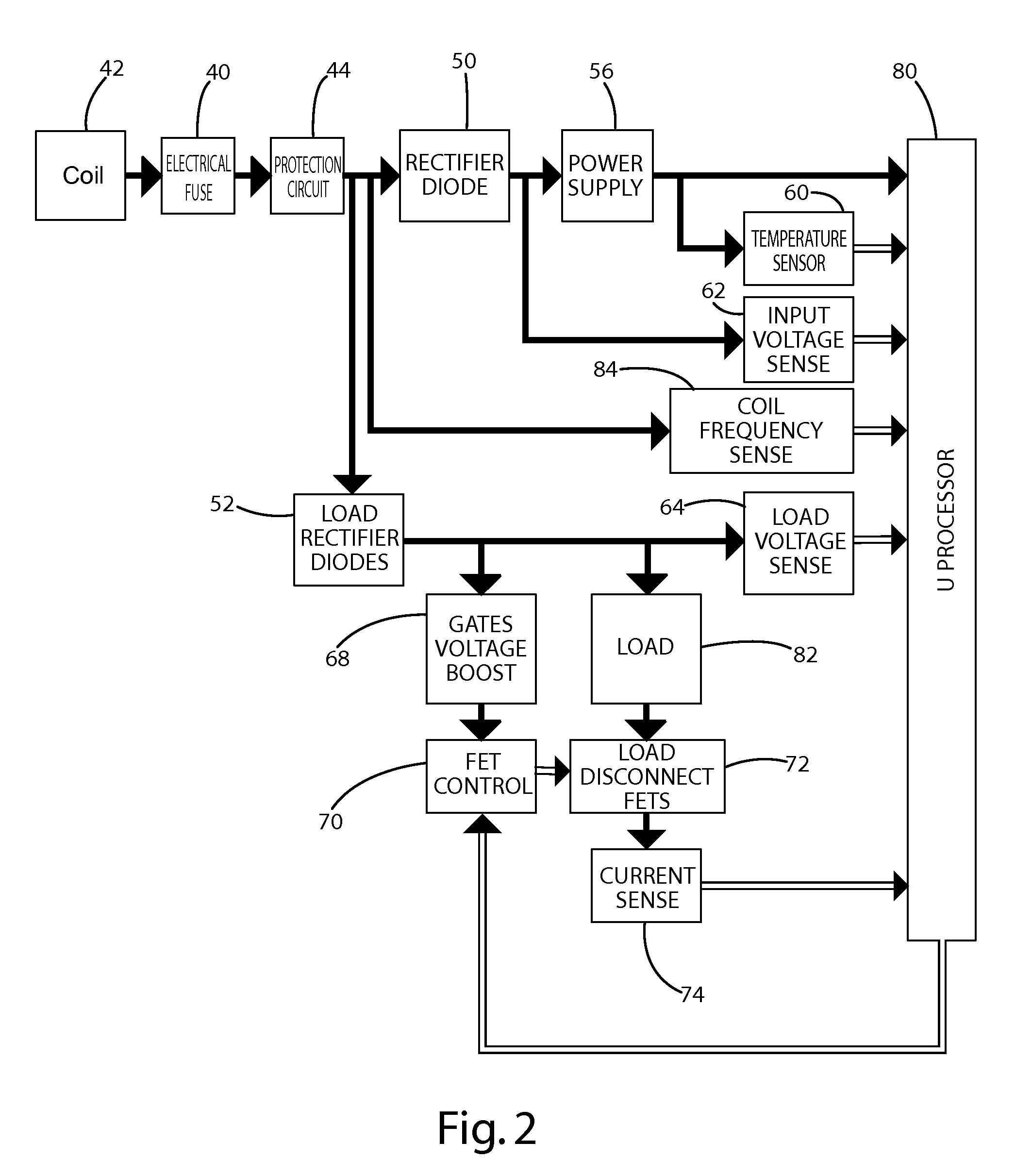Input protection circuit
a protection circuit and input technology, applied in the field of input protection circuits, can solve the problems of insufficient current, overvoltage condition yet low amount of available current, unwanted voltage in the secondary coil of the secondary circuit, etc., and achieve the effect of dissipating a sufficient amount of hea
- Summary
- Abstract
- Description
- Claims
- Application Information
AI Technical Summary
Benefits of technology
Problems solved by technology
Method used
Image
Examples
Embodiment Construction
[0016]Referring now to FIG. 1, a diagram of an inductively coupled system having a voltage clamp protection circuit 38 in accordance with an embodiment of the present invention is shown. The illustrated inductively coupled system includes an inductive power supply 10 and a remote device 20. The inductive power supply 10 includes a power supply circuit 12, a capacitor 14 and a primary coil 16. The remote device 20 includes a secondary coil 22, a thermal cutoff 24, a voltage clamp 26, optional thermal adhesive 25, an optional rectification circuit 32 and a load 34. The voltage clamp protection circuit 38 generally includes at least two components, the voltage clamp 26 and the thermal cutoff 24. In the illustrated embodiment, the voltage clamp 26 and the thermal cutoff 24 are thermally coupled to each other with an optional thermal adhesive 25. The thermal cutoff 24 is electrically connected between the secondary coil 22 and the rest of the circuit. The voltage clamp 26 clamps the inpu...
PUM
 Login to View More
Login to View More Abstract
Description
Claims
Application Information
 Login to View More
Login to View More - R&D
- Intellectual Property
- Life Sciences
- Materials
- Tech Scout
- Unparalleled Data Quality
- Higher Quality Content
- 60% Fewer Hallucinations
Browse by: Latest US Patents, China's latest patents, Technical Efficacy Thesaurus, Application Domain, Technology Topic, Popular Technical Reports.
© 2025 PatSnap. All rights reserved.Legal|Privacy policy|Modern Slavery Act Transparency Statement|Sitemap|About US| Contact US: help@patsnap.com



